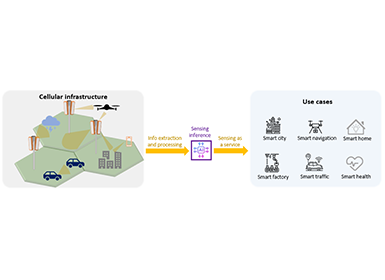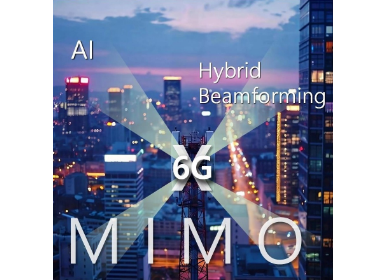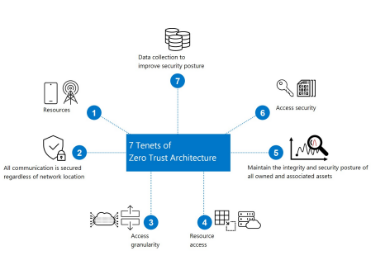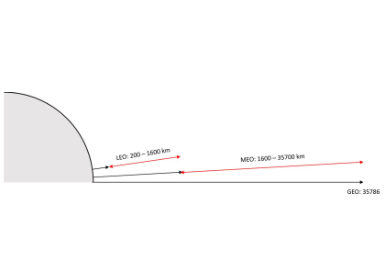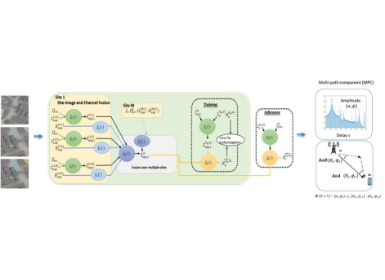Communications
UE-Centric Distributed MIMO for 5G and Beyond - Benefits, Challenges, and Promising Solutions
1. Introduction
Although past generations of mobile communication systems have continuously evolved to optimize frequency reuse and cell structures, inter-cell interference remains the most challenging problem, acting as a dominant performance-limiting factor. In particular, with full frequency reuse, especially when multiple Transmission and Reception Points (TRPs) are placed in close proximity, cell-edge User Equipment (UE) can be subject to strong interference from adjacent TRPs if TRPs operate without coordination. This can result in significant performance degradation for both eMBB (enhanced Mobile BroadBand) and URLLC (Ultra-Reliable Low Latency Communication) services, which are essential for 5G and the upcoming 6G.
To overcome this limitation, the industry is transitioning from the conventional “cell-centric” optimization to “UE-centric” dynamic clustering, aiming to expand cell boundaries. As illustrated in Figure 1, Distributed Multiple-Input Multiple-Output (D-MIMO) plays a pivotal role in this shift by aggregating multiple TRPs into a single TRP group with the support of centralized scheduling and Joint Transmission (JT) within the group, effectively managing interference and enhancing received signal quality. Recently, both industry and academia have been actively conducting research on D-MIMO, recognizing its potential to deliver significant performance improvements in mobile communication systems, including studies on resource allocation optimization [1], uplink performance enhancement [2], and field trial attempts [3, 4].
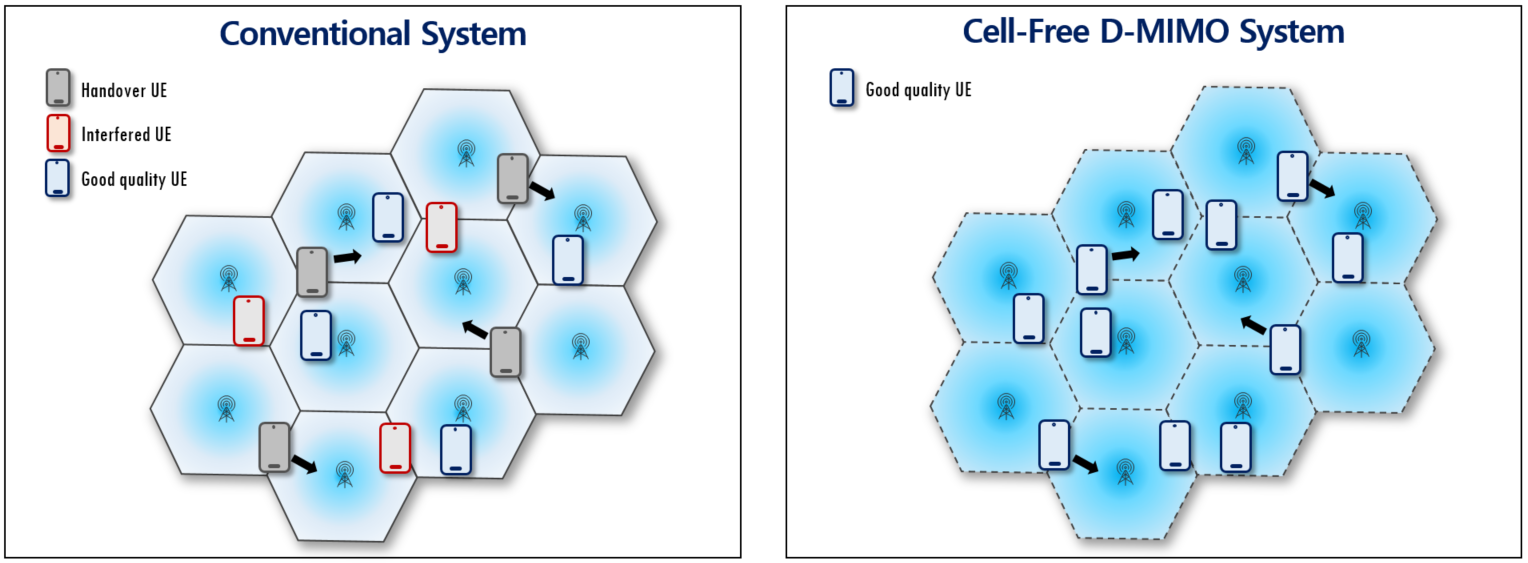
Figure 1. Conventional system vs. D-MIMO system
Our vision for the future D-MIMO system is to achieve the following important goals:
Cell-edge Signal Quality Improvement: With the support of UE-centric connectivity and joint transmission, D-MIMO with multi-TRP coordination can mitigate sharp Signal-to-Interference-plus-Noise Ratio (SINR) degradation at cell boundaries, ensuring more reliable connections and higher user-experienced data rates.
Multi-TRP Interference Control: A centralized scheduler can dynamically utilize time, frequency, and spatial resources for multi-TRP, transforming inter-cell interference into a beneficial resource for improving overall network efficiency and capacity.
In order to realize our vision for the D-MIMO system and drive innovation in next-generation networks, the following five key features are necessary:
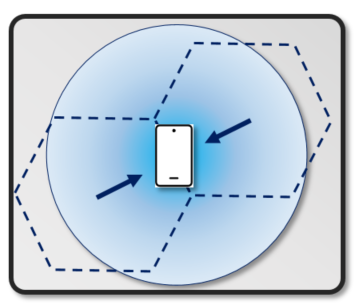
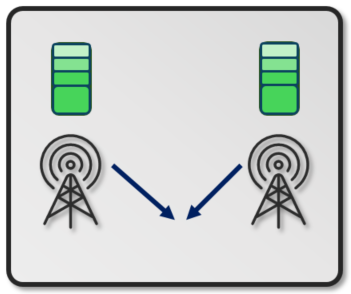
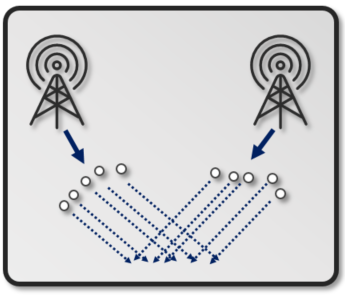
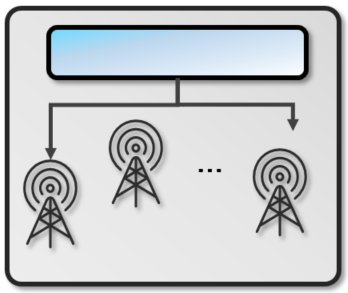
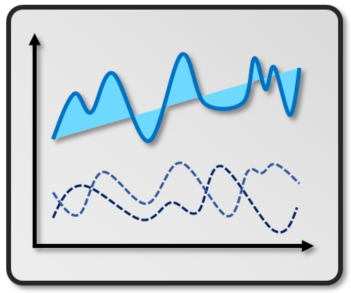
Compared to traditional cell-centric systems, the D-MIMO system must handle significantly more complex and diverse factors to address the above features. Therefore, it may be challenging to find an optimal solution using typical rule-based algorithms. To address this, we also aim to integrate Artificial Intelligence (AI) technology for effectively deriving optimal transmission and scheduling strategies for D-MIMO. In the following sections of this blog, we present our technical solutions for achieving each of the above features.
2. Towards Cell-free Networks with D-MIMO
In legacy cellular networks, each TRP is typically associated with a distinct PCID, effectively operating as an independent cell. When a UE moves around cell boundary areas, it detects changes in signal strength from other cells with different PCIDs, triggering Hand-Over (HO) procedures to change its connection to a cell with better signal quality, a so-called “cell-centric” network architecture. Although this cell-centric architecture in cellular networks has proven to be quite effective in conventional network deployments with its flexible scalability and maximum frequency reuse, it reveals some critical limitations in dense networks, such as scheduling interruptions due to frequent HO, resulting in poor user experience.
To overcome scheduling interruption and signalling overhead due to HO, in the emerging UE-centric cell-free D-MIMO architecture [5], all TRPs in a network are grouped together potentially with the same PCID. In other words, the group of TRPs constructs a single logical cell, eliminating the need for frequent HO procedures in conventional cell-centric network architecture, resulting in seamless mobility.
However, achieving truly “cell-free” architecture is challenging in 5G commercial networks due to the limitations of physically distributed computing resources in the traditional 5G radio access network (RAN) architecture (i.e., the Radio-Units (RUs) and Distributed-Units (DUs)). Therefore, considering the compatibility with the commercial network deployment, it is extremely difficult to construct a large TRP group with a significant number of distributed TRPs as a single cell, which requires substantially greater computing capability.
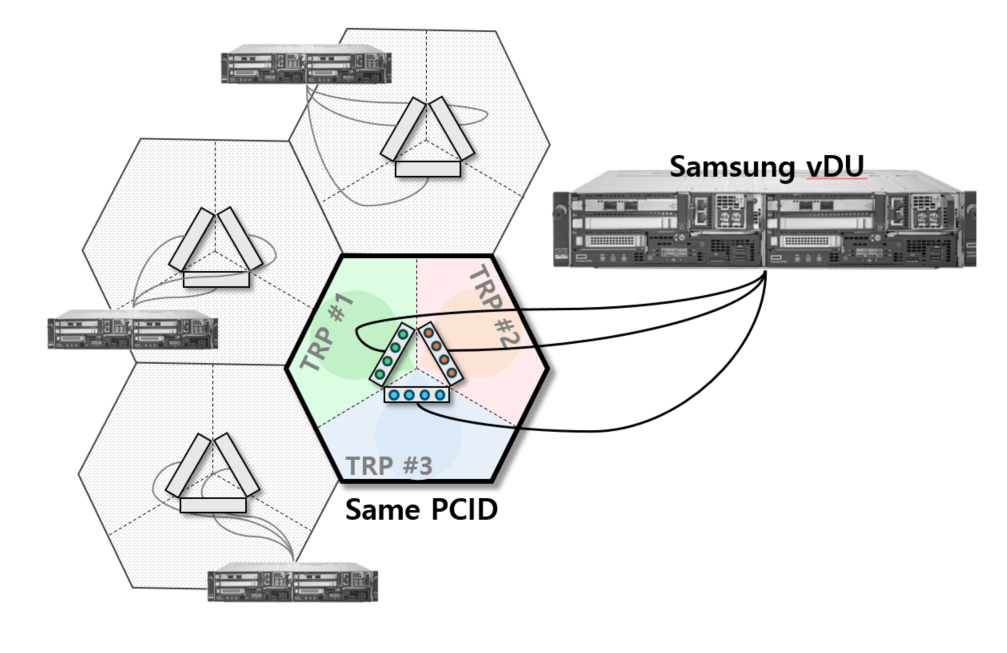
Figure 2. D-MIMO system on Samsung’s virtual-RAN (vRAN)
As a practical initial design to leverage the advantages of the cell-free network, we consider a model where a few TRPs in close proximity form a group sharing the same PCID. For example, as shown in Figure 2, three TRPs connected to a virtual DU (vDU) can be organized into one TRP group. It is assumed that within a TRP group, a UE-centric cluster is dynamically constructed, tailored to the UE’s location and channel conditions based on, e.g., L1/L3-RSRP or PRACH signal strength detection on the network side. By selecting most relevant TRPs as active participants, the network ensures efficient resource utilization and improved link reliability with the centralized scheduling. This layered structure enables near cell-free mobility and establishes a new operational paradigm for wireless communication systems. This initial design can be extended to accommodate more TRPs with more efficient deployment of RAN architecture, ultimately evolving toward a truly cell-free network architecture.
3. Design of Centralized Scheduling and Link Adaptation for D-MIMO
3.1. Centralized Scheduler Design for Multi-TRP MU-MIMO
Traditional cellular networks typically employ a distributed, per-cell scheduling architecture, making efficient inter-cell interference control inherently challenging. However, as previously described, a centralized scheduling architecture per TRP group is essential, enabling effective inter-cell interference mitigation and joint transmission within a TRP group. By leveraging the increased transmit antenna dimensions across multiple TRPs, our D-MIMO system employs a centralized scheduler based on multi-TRP MU-MIMO support.
Figure 3 illustrates examples of per-cell based distributed scheduling and centralized scheduling architectures, where a TRP group consists of three TRPs, each supporting one cell sector. In the distributed scheduling architecture, it is difficult for each TRP to obtain interference information from adjacent TRPs. As a result, UEs located at sector boundaries would experience severe inter-UE interference, leading to performance degradation. On the other hand, in our centralized MU-MIMO scheduling architecture in the D-MIMO system, resource allocation and precoding are performed in a centralized manner, treating the TRPs in a TRP group as a single cell with more antennas. Therefore, we can utilize more powerful beamforming gain and spatial multiplexing gain for CJT. Furthermore, it can naturally mitigate inter-UE interference, through centralized UE selection, where a pair of UEs with minimal interference to each other is selected.
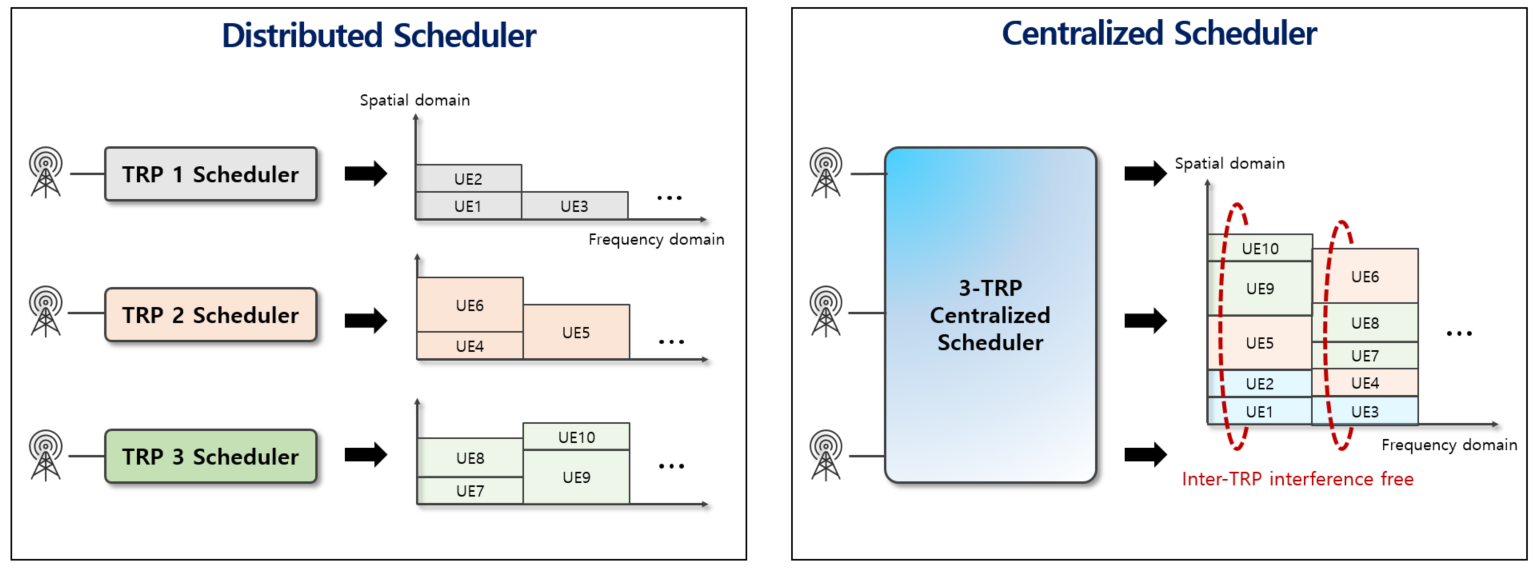
Figure 3. Distributed scheduler vs. Centralized scheduler
We evaluated the potential performance benefits of the centralized MU-MIMO scheduling through system-level simulation, assuming that three TRPs, each with 64 digital ports, form a TRP group. The results show that the interference level at each UE decreases by approximately 6 dB on average compared to the distributed scheduling method. Moreover, the simulation results in Figure 4 also show that the average user throughput increases by 27% to 40%, as the resource utilization ratio varies from 20% to 60%.
It is also worth noting that there are various ways to further optimize the centralized scheduling design. For example, it may not be always beneficial to allow full support from multiple TRPs to serve a particular UE, especially when there is traffic load imbalance between sectors. In this case, careful scheduling strategies can be considered to balance the trade-off between using all TRPs to serve a particular set of users with JT and maximizing resource utilization with full frequency reuse. One possible approach for this optimization is adjusting the Proportional Fair (PF) metric in the scheduling procedure by newly taking into account the traffic load information for each TRP. In this way, the scheduler can jointly balance between the CJT opportunity and efficient resource utilization. Further study is needed to design optimal methods of the centralized scheduler, which can significantly affect the D-MIMO system performance.
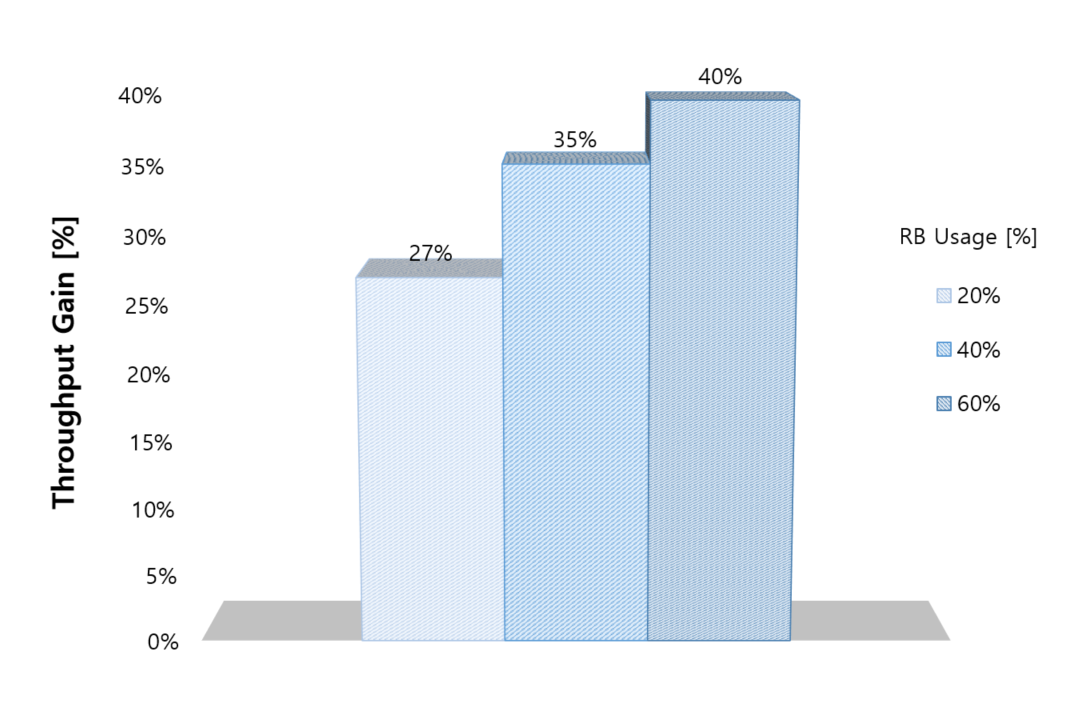
Figure 4. System level simulation result of the centralized scheduler on D-MIMO
3.2. Dynamic Link Adaptation
Due to the dynamic changes in the TRP clusters for individual UEs, D-MIMO link adaptation (LA) is a more complex problem compared to traditional methods. Additionally, one of the main issues is inaccurate SINR estimation caused by the dynamic changes of the candidate TRPs for CJT in the TRP group. As illustrated in Figure 5, the number of TRPs and TRP combinations for CJT can be dynamically adjusted. Consequently, the link quality of each CJT can change rapidly. This means that the transmitting TRPs and interfering TRPs shift rapidly on a short timescale.

Figure 5. An Example of TRP changes in the TRP cluster
A natural approach to address this issue is to extend the conventional rule-based LA mechanism, considering the dynamic changes in SINR due to various TRP combinations for CJT. For example, with Channel State Information (CSI) reporting from each TRP in a UE-centric TRP cluster as well as the estimated Sounding Reference Signal (SRS)-based channel information, we can predict the SINR of each TRP combination at a given time. Based on this prediction, the optimal MCS can be determined for the selected TRP combination as a result of the centralized scheduling. This approach ensures accurate SINR estimation across dynamically changing TRP combinations for CJT, enhancing the spectral efficiency and reliability of data transmission in D-MIMO systems. Our system-level simulation shows that, compared to the traditional LA algorithm relying only on the non-CJT-based SINR estimation with per-TRP CSI reports, the enhanced rule-based LA can increase the average user throughput by approximately 20% with the dynamic TRP selection for CJT.
Although this direct extension of the rule-based LA method can potentially provide good performance improvement, it may suffer from higher complexity, due to increasing number of TRP combinations required for accurate SINR estimation. In this case, leveraging AI techniques for more effective SINR estimation for D-MIMO can be a good solution. As an example, the AI-based LA could predict accurate SINR by utilizing the information available at the network, such as latest CSI reports, additional channel information obtained by SRS, and historical inter-TRP interference statistics for different TRP combinations. We anticipate that additional performance improvement can be achieved on top of the rule-based LA method, with further study of optimized AI models for effective real-time SINR prediction.
4. Joint Precoding
To fully realize the benefits of the D-MIMO system described in the previous section, joint precoding across multi-TRP is essential. Joint precoding can significantly enhance network capacity by aggregating multiple antennas at multi-TRP, leveraging increased beamforming capability and spatial multiplexing gains.
To maximize joint precoding gain, it is critical to obtain relevant CSI across multi-TRP to ensure coherent transmission. It is worth noting that with the introduction of 3GPP Release 18 specifications, a CJT feature supporting coherent codebooks for multi-TRP has been standardized, enabling gNB to perform joint precoding based on UE’s CSI report, which is constructed from concatenated MIMO channels across multi-TRP. However, while this CJT feature can provide good performance for D-MIMO systems, Release 18 features have not yet been adopted in commercial 5G devices, and not all UEs will have the capability to support CJT codebooks. Therefore, implementation-based joint-precoding solutions should be devised to obtain the information on phase, time, and frequency offsets between TRPs. In the following, we introduce three candidate solutions to implement inter-TRP calibration:
UE-assisted calibration: One possible approach is to have UEs estimate and report inter-TRP channels based on configured Channel State Information Reference Signal (CSI-RS) ports across antennas from different TRPs. In this method, gNB can leverage the co-phasing parameter within the corresponding CSI report. The key advantage of this method is that it is applicable to legacy UEs that do not support the CJT features introduced in 3GPP Release 18 or 19.
Over-the-air calibration between TRPs: From a network perspective, it is also possible to consider time and frequency offset estimation between TRPs, by having cooperating TRPs transmit multiple pilot signals to each other. However, this method requires, for example, careful design of downlink and uplink symbol allocation between cooperating TRPs in TDD systems.
AI based calibration: AI-based solutions can also offer promising approaches to finding suitable joint precoding vectors. Based on the conventional CSI for individual TRPs, additional AI models trained with massive D-MIMO datasets can maximize JT performance by inferring the relative relationships between TRPs. As an initial attempt to explore the feasibility of this approach, we developed a Multi-Layer Perceptron-mixer (MLP-mixer)-based AI model that generates proper joint precoding vectors, which shows approximately 4.5 dB of Signal-to-Noise-Ratio (SNR) gain compared to CJT without co-phase calibration between TRPs.
5. Conclusion
In this blog, we have demonstrated the D-MIMO system as a cornerstone of 5G-Advanced and future 6G communication systems. As the industry moves forward, we anticipate that D-MIMO will play a central role in the evolution of next-generation networks, thanks to its ability to provide seamless connectivity, enhance link quality, and transform interference into a useful resource. Our future research will focus on advancing D-MIMO technology by incorporating enhanced AI techniques. Furthermore, we will investigate uplink performance enhancement and UE mobility support with D-MIMO, with findings to be presented in future articles of this technical blog series on D-MIMO.
References
[1] F. E. Kadan and Ö. Haliloğlu, "An Efficient Resource Block Allocation Method in Distributed MIMO," in IEEE Wireless Communications Letters, vol. 12, no. 12, pp. 2093-2097, Dec. 2023, doi: 10.1109/LWC.2023.3307902.
[2] “Nokia and AT&T collaborating to improve 5G uplink with distributed massive MIMO”, Nokia Newsroom, February 28, 2022, https://www.nokia.com/newsroom/nokia-and-att-collaborating-to-improve-5g-uplink-with-distributed-massive-mimo-mwc22
[3] “ZTE launches D^3-ELAA solution, leading the new era of zero-variation mobile experience”, ZTE News & Events, July 09, 2024, https://www.zte.com.cn/global/about/news/zte-launches-d3-elaa-solution-leading-the-new-era-of-zero-variation-mobile-experience.html
[4] “NTT Corp., NTT DOCOMO and NEC Demonstrate Distributed MIMO Technology for High Frequency 6G Communications in Automobiles and Trains, NTT Newsroom, March 25, 2025 https://group.ntt/en/newsrelease/2025/03/25/250325a.html
[5] Yunlu Xiao, Marina Petrova, and Ljiljana Simić, “Cell-Free Massive MIMO Under Mobility: A Fairness-Differentiated Handover Scheme”, arXiv preprint arXiv: 2503.24081, 2025

